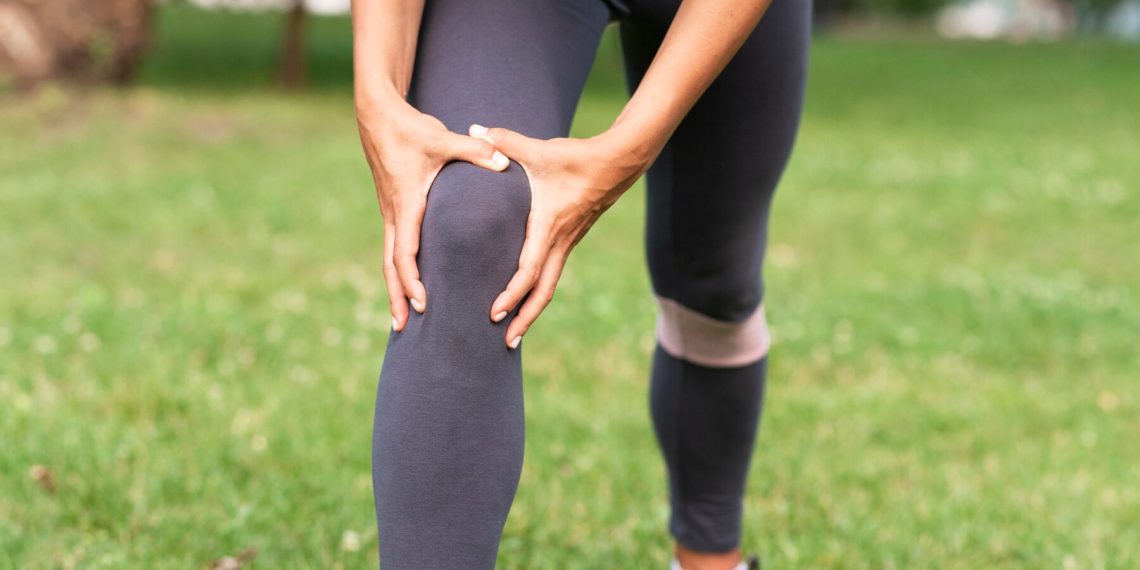Knee strain, a condition characterized by overstretched or torn muscles or tendons around the knee, can disrupt daily activities and athletic performance. This condition often results from sudden movements, overuse, or direct trauma. Physiotherapy Edmonton plays a crucial role in managing pain, promoting healing, and restoring function. Physiotherapy exercises include a combination of manual therapy, targeted exercises, and advanced modalities. In Edmonton, physiotherapy aims to reduce pain, improve mobility, and prevent future injuries, allowing individuals to return to their activities with confidence.
6 Physiotherapy Exercises to Alleviate Knee Strain Pain:
Physiotherapy in Edmonton suggests these six physiotherapy exercises designed to alleviate pain, promote healing, and restore knee function effectively.
1. Quadriceps Sets
Quadriceps sets are simple yet effective exercises to strengthen the muscles at the front of the thigh. These muscles play a vast role in stabilizing the knee joint.
- How to do it: Sit or lie down with the affected leg extended. Tighten the quadriceps muscles by pushing the back of the knee down towards the floor. Hold for 5-10 seconds and then relax. Repeat 10-15 times.
- Benefits: Strengthening the quadriceps reduces stress on the knee joint, improves stability, and aids in the recovery process from knee strain. Strong quadriceps support the knee better during activities, reducing the likelihood of further injury.
2. Hamstring Curls
Hamstring curls aid in strengthening the muscles at the back of the thigh, which support the knee. The hamstrings are crucial for knee stability and movement.
- How to do it: Stand while holding onto a chair for balance. Softly bend the knee of the affected leg, bringing the heel towards the buttocks. Hold for a few seconds, and then lower the leg. Repeat 10-15 times.
- Benefits: Enhances knee support and flexibility, reducing the likelihood of further knee strain and promoting better movement patterns. Strong hamstrings can help alleviate pressure on the knee and contribute to overall leg strength.
3. Straight Leg Raises
Straight leg raises improve quadriceps strength without putting too much strain on the knee. This exercise is particularly useful for those who experience pain during knee bending.
- How to do it: Lie on your back with your one leg bent and your other leg straight. Engage the thigh muscles of the straight leg and slowly lift it to the height of the bent knee. Hold for a few seconds, and then lower the leg. Repeat 10-15 times.
- Benefits: Builds quadriceps strength, which supports knee stability and reduces pain from knee strain during movement. This exercise also engages the hip flexors, promoting overall lower limb strength.
4. Heel Slides
Heel slides help improve knee flexion and mobility, which are often compromised due to knee strain. This exercise gently encourages the knee to move through its range of motion.
- How to do it: Lie on your back with both legs extended. Gradually slide the heel of the affected leg towards the buttocks, bending the knee as much as possible. Hold for a few seconds, and then slide the heel back to the starting position. Repeat 10-15 times.
- Benefits: Increases knee range of motion, aiding in the restoration of normal movement patterns and reducing stiffness from knee strain. Improved flexibility helps in performing daily activities with ease and reduces the risk of further injury.
5. Calf Raises
Calf raises strengthen the calf muscles, which play a role in knee stability and support. Strong calf muscles contribute to overall lower leg strength and balance.
- How to do it: Stand with feet hip-width apart and support onto a chair for balance. Softly raise your heels off the ground, standing on your toes. Maintain for a few seconds, and then lower your heels back down. Repeat 10-15 times.
- Benefits: Strengthens the calf muscles, which support the knee during weight-bearing activities and improves overall lower leg stability, reducing the risk of knee strain. Calf raises also enhance balance and coordination, which are crucial for preventing falls and injuries.
6. Wall Sits
Wall sits help strengthen the quadriceps, hamstrings, and glutes, providing overall support to the knee joint.
- How to do it: Stand with your back against a wall and gradually slide down into a sitting position, as if sitting in an invisible chair. Keep your knees directly above your ankles and hold the position for 15-30 seconds. Gradually slide back up to the starting position. Repeat ten times.
- Benefits: Strengthens the muscles around the knee, improving joint stability and reducing pain from knee strain. Wall sits also enhance endurance and help maintain proper alignment of the knee joint.
Enhancing Recovery and Confidence through Physiotherapy Exercises:
Effectively managing knee strain through physiotherapy exercises is essential for a full recovery and return to daily activities. In Step Physical Therapy in Edmonton not only facilitates healing but also helps in preventing future injuries by enhancing joint stability and flexibility. Regular engagement in these physiotherapy exercises, along with guidance from a qualified physiotherapist, ensures that individuals can recover safely and efficiently. Proper technique and consistency in performing these exercises are crucial for optimal results. Physiotherapy in Edmonton guides these exercises into a rehabilitation routine, and individuals can achieve a quicker, more effective recovery from a knee strain, enabling them to resume their activities with confidence and reduced risk of recurrence.
For those seeking a qualified physiotherapist near me at a reputable physiotherapy clinic, finding the right professional has been crucial in effectively managing and recovering from knee strain.







